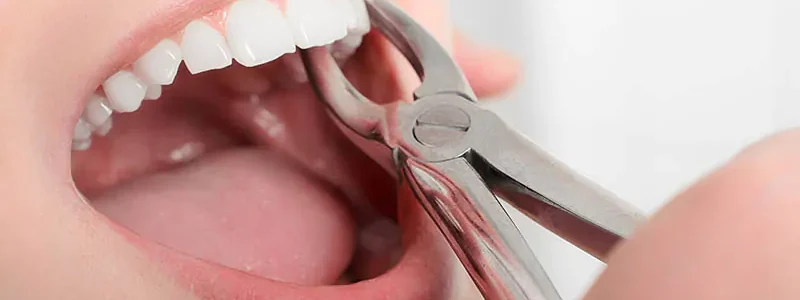- Call +91 99666 15150 For Emergency dental assistance.
- Sahara Rd, opp. SBI, Vivekanand Nagar, Mansoorabad, Hyderabad.

At Raman Dental, Our Mission Is To Create Radiant And Healthy Smiles That Last A Lifetime. As A Leading Dental Clinic In Hyderabad, We Are Dedicated To Providing Top-Rated Dental Services With A Focus On Advanced Technology And Personalized Care.

Each type of extraction requires different techniques and considerations based on the specific dental condition and the patient’s oral health needs.
Tooth extraction may be necessary if a tooth is severely decayed, damaged beyond repair, infected, or causing overcrowding in the mouth.
Your dentist will numb the area with local anesthesia, ensuring you don’t feel pain during the procedure. Afterward, mild discomfort and swelling are common, which can be managed with over-the-counter pain medications.
Recovery time varies but typically lasts a few days to a week. Following your dentist’s post-operative care instructions, such as avoiding hard foods and maintaining oral hygiene, can promote faster healing.
Possible risks include dry socket (when the blood clot at the extraction site fails to form or is dislodged), infection, and damage to adjacent teeth or structures. Your dentist will discuss these risks with you beforehand.
Yes, extracted teeth can often be replaced with dental implants, bridges, or dentures. Your dentist can recommend the best option based on your oral health and preferences.
Costs vary depending on factors such as the complexity of the extraction and your location. Your dentist can provide a cost estimate during your consultation.
Follow your dentist’s instructions carefully, which may include applying ice packs to reduce swelling, taking prescribed medications, and avoiding certain activities like smoking or drinking through a straw that could dislodge the blood clot.